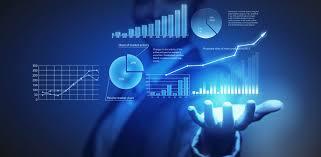Predictive analytics is an advanced technique that utilizes data, statistical algorithms, and machine learning models to forecast future outcomes based on historical data patterns. This article explores the fundamentals, methods, applications, benefits, challenges, and future trends of predictive analytics, highlighting its transformative impact across various industries and sectors.
Fundamentals of Predictive Analytics
Predictive analytics involves extracting insights from data to predict future trends and behavior patterns. Key components include:
- Data Collection: Gathering relevant data from multiple sources, including databases, IoT devices, sensors, and digital platforms.
- Data Cleaning and Preparation: Preprocessing data to handle missing values, outliers, and inconsistencies to ensure data quality.
- Model Development: Selecting and building appropriate statistical models or machine learning algorithms based on the nature of the data and the prediction task.
- Model Evaluation and Deployment: Evaluating the model’s performance using metrics like accuracy, precision, recall, and deploying it to make predictions on new data.
Methods and Techniques in Predictive Analytics
- Regression Analysis: Analyzing the relationship between variables to predict numerical outcomes, such as sales forecasts or market trends.
- Classification Algorithms: Identifying patterns and classifying data into categories or classes, such as customer segmentation or fraud detection.
- Machine Learning Models: Using algorithms like decision trees, random forests, support vector machines (SVM), and neural networks to make predictions based on historical data patterns.
- Time Series Analysis: Analyzing sequential data points over time to forecast future trends, such as stock prices, weather patterns, or website traffic.
Applications of Predictive Analytics
- Business and Marketing: Predicting customer behavior, market demand, sales trends, and optimizing marketing campaigns for personalized customer experiences.
- Finance and Risk Management: Forecasting financial markets, credit risk assessment, fraud detection, and portfolio management based on historical data analysis.
- Healthcare: Predicting patient outcomes, disease outbreaks, identifying at-risk populations, and personalized treatment recommendations.
- Manufacturing and Supply Chain: Optimizing inventory management, production scheduling, and predicting equipment failures through predictive maintenance.
Benefits of Predictive Analytics
- Decision Support: Providing decision-makers with insights and forecasts to make informed strategic decisions and mitigate risks.
- Operational Efficiency: Optimizing processes, reducing costs, and improving resource allocation based on predictive insights.
- Customer Satisfaction: Enhancing customer experience by anticipating needs, preferences, and delivering personalized services.
- Competitive Advantage: Gaining a competitive edge by leveraging data-driven insights to innovate, adapt to market changes, and seize opportunities.
Challenges in Predictive Analytics
- Data Quality: Ensuring data accuracy, completeness, and consistency across disparate sources to build reliable predictive models.
- Model Complexity: Addressing the complexity of algorithms and models, interpretability, and ensuring robust performance in real-world applications.
- Privacy and Ethics: Safeguarding sensitive data, ensuring compliance with regulations (e.g., GDPR, HIPAA), and addressing ethical concerns related to data use.
- Deployment and Integration: Integrating predictive models into existing systems, ensuring scalability, and providing ongoing support and maintenance.
Future Trends in Predictive Analytics
- AI-Powered Predictive Models: Advancing AI algorithms for more accurate predictions, automated feature engineering, and adaptive learning from dynamic data streams.
- Big Data and IoT Integration: Harnessing vast amounts of data from IoT devices for real-time predictive analytics, enabling proactive decision-making.
- Explainable AI: Developing interpretable models and algorithms to explain predictions and enhance trustworthiness in decision support systems.
- Edge Analytics: Performing predictive analytics closer to the data source (edge devices), reducing latency, and enhancing responsiveness in IoT and real-time applications.
Conclusion
Predictive analytics empowers organizations to anticipate future trends, make proactive decisions, and gain competitive advantages in rapidly evolving markets. By leveraging advanced data analytics techniques, machine learning algorithms, and emerging technologies, businesses can harness the potential of predictive analytics to optimize operations, enhance customer experiences, and drive innovation. Addressing challenges related to data quality, privacy, model complexity, and ethical considerations will be crucial in realizing the full potential of predictive analytics in shaping the future of industries, economies, and society as a whole.




